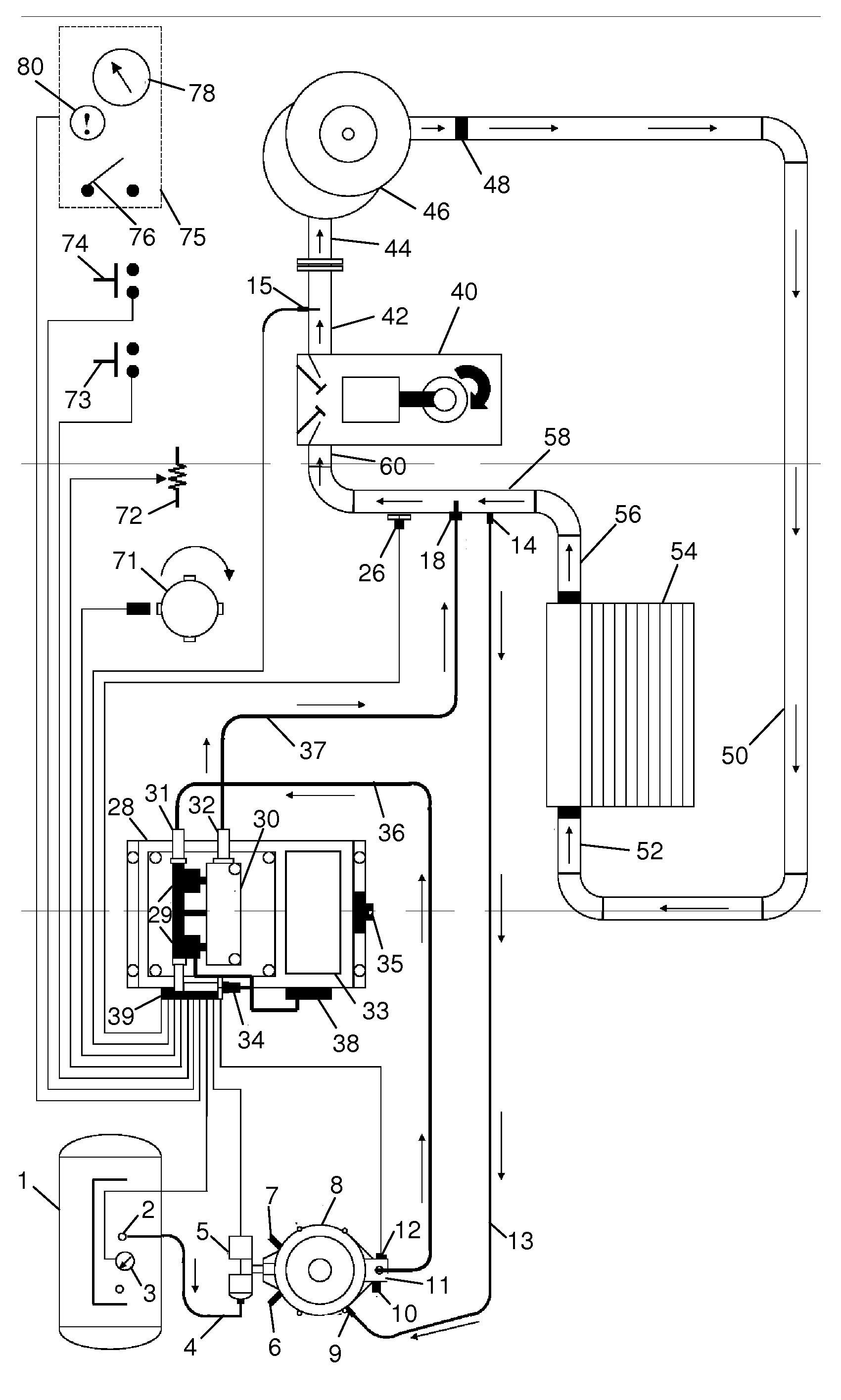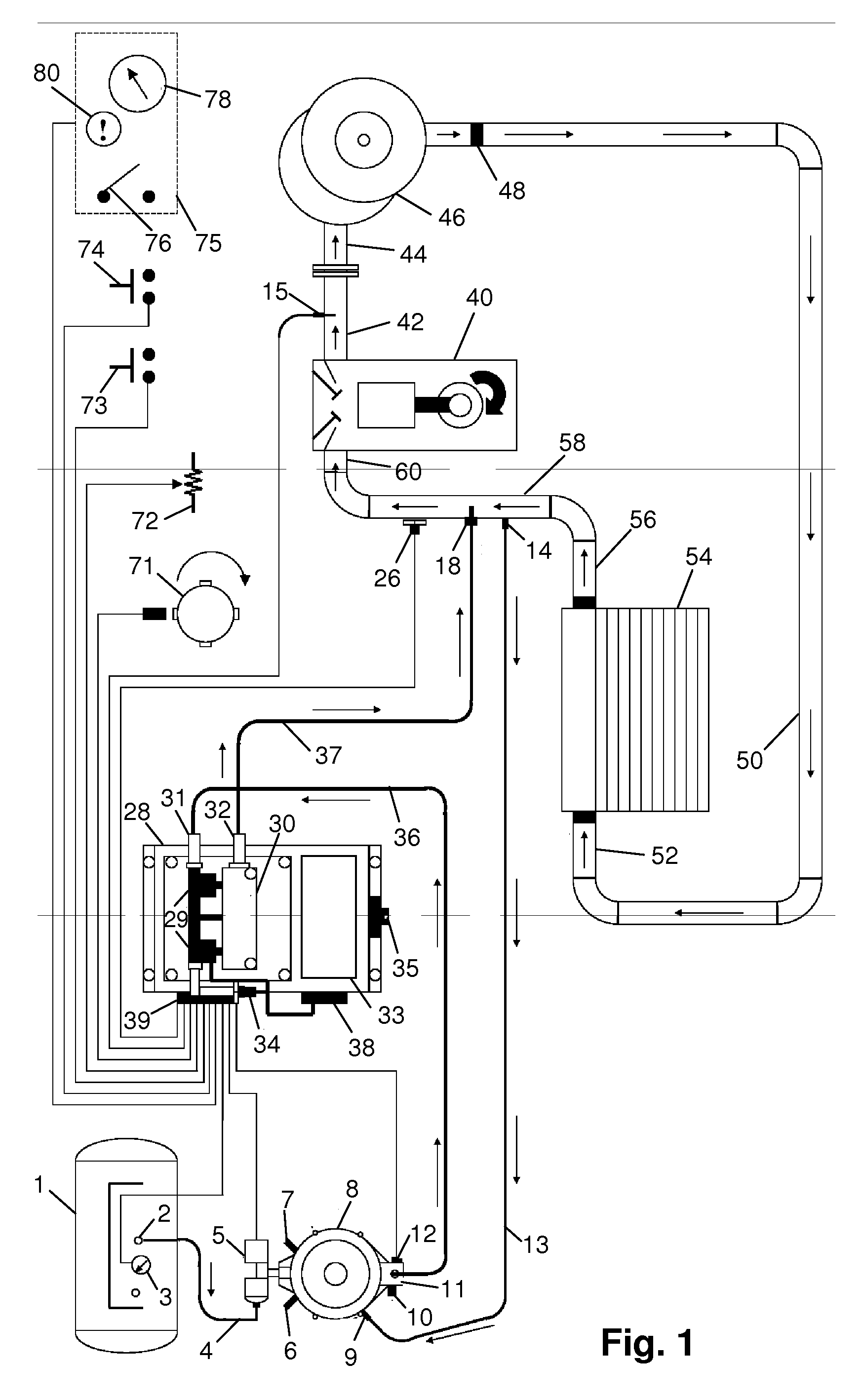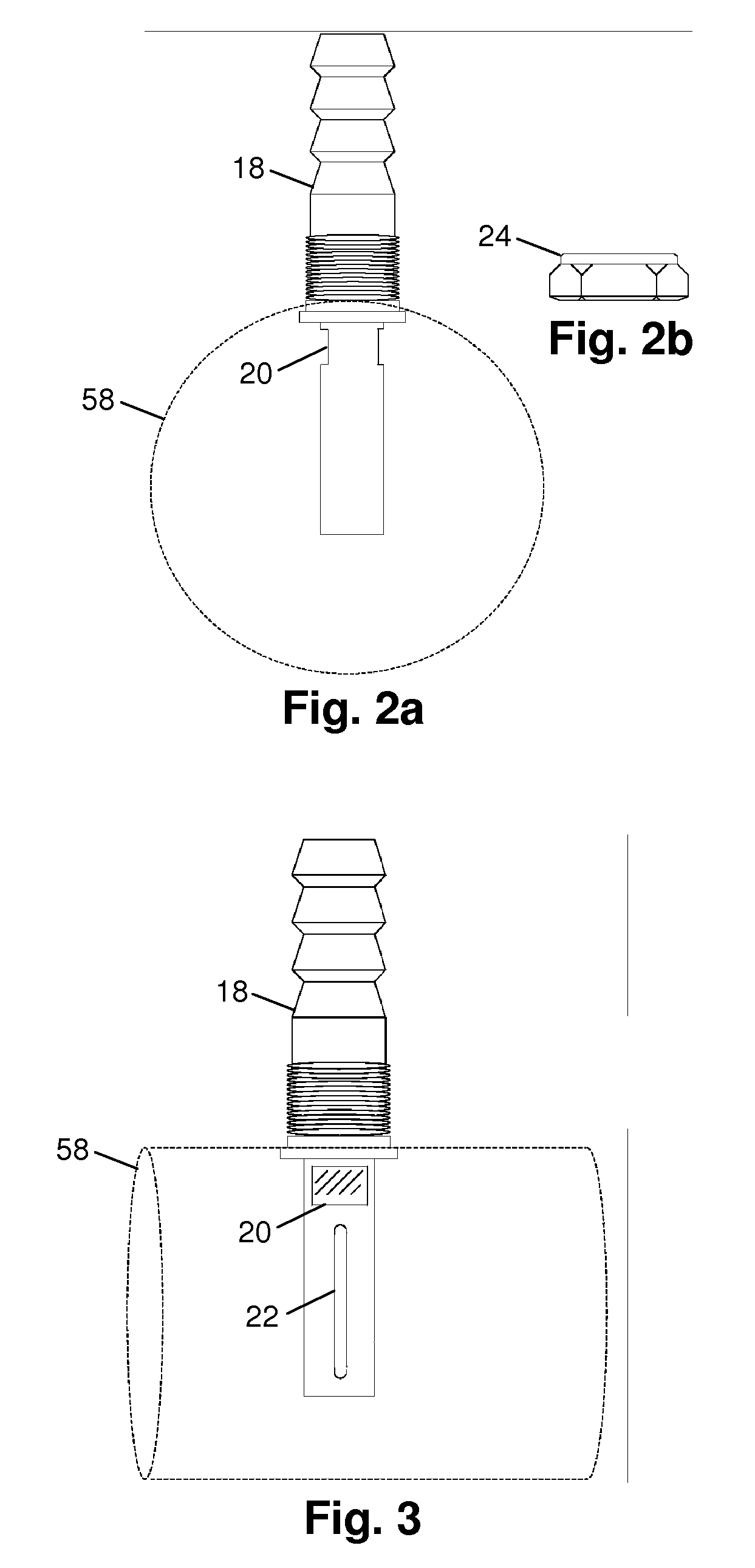Supplemental Vapor Fuel Injection System for Internal Combustion Engines
- Summary
- Abstract
- Description
- Claims
- Application Information
AI Technical Summary
Benefits of technology
Problems solved by technology
Method used
Image
Examples
Embodiment Construction
[0020]Overview
[0021]The present disclosure provides for a supplemental vapor fuel injection system for internal combustion engines capable of utilizing numerous vapor type fuels such as propane, natural gas, biogas, ammonia, hydrogen, methane, butane, and Hythane® as described herein. The system includes a combined vaporizer and pressure regulator unit (for sake of brevity hereinafter shortened to either “vaporizer / pressure regulator” or “vaporizer / regulator”) that provides regulated supplemental vapor fuel pressure to two specially designed vapor fuel injectors and a controller unit capable of real-time control of the vapor fuel injectors. The injectors meter precise amounts of vapor fuel into a specially designed manifold that combines the vapor for delivery to a directional nozzle located in the post-turbocharged airstream of the diesel engine. While a diesel engine is shown in the exemplary embodiment, any internal combustion engine may be adapted with minor alterations to the i...
PUM
 Login to View More
Login to View More Abstract
Description
Claims
Application Information
 Login to View More
Login to View More - R&D
- Intellectual Property
- Life Sciences
- Materials
- Tech Scout
- Unparalleled Data Quality
- Higher Quality Content
- 60% Fewer Hallucinations
Browse by: Latest US Patents, China's latest patents, Technical Efficacy Thesaurus, Application Domain, Technology Topic, Popular Technical Reports.
© 2025 PatSnap. All rights reserved.Legal|Privacy policy|Modern Slavery Act Transparency Statement|Sitemap|About US| Contact US: help@patsnap.com



